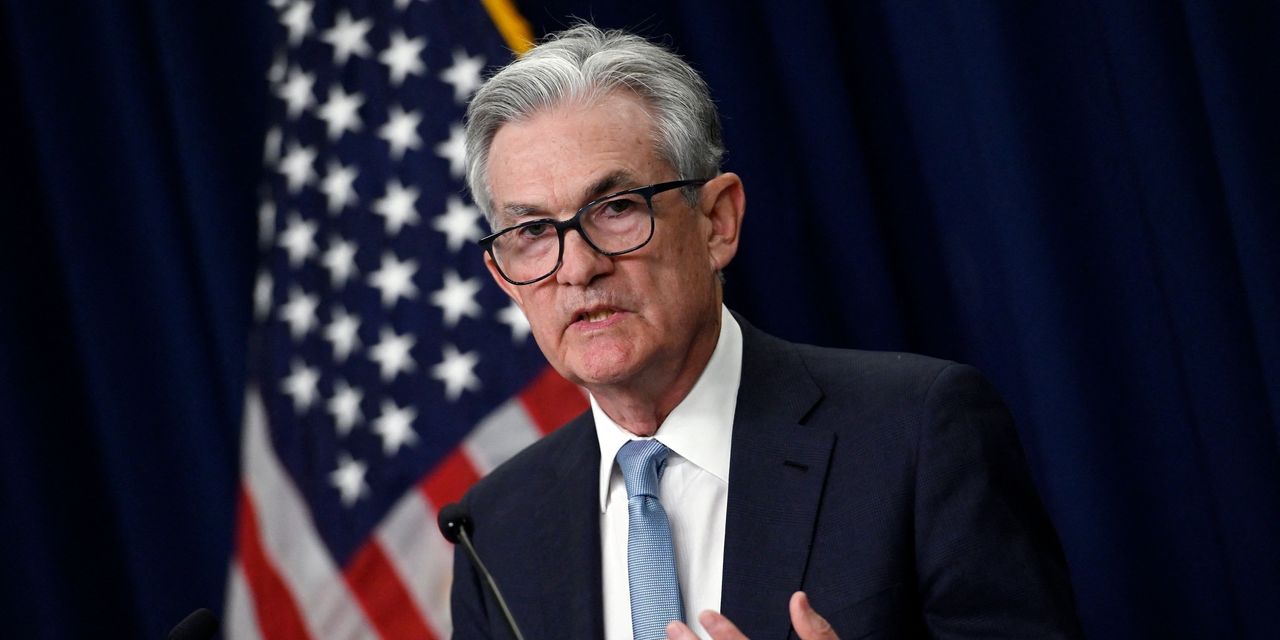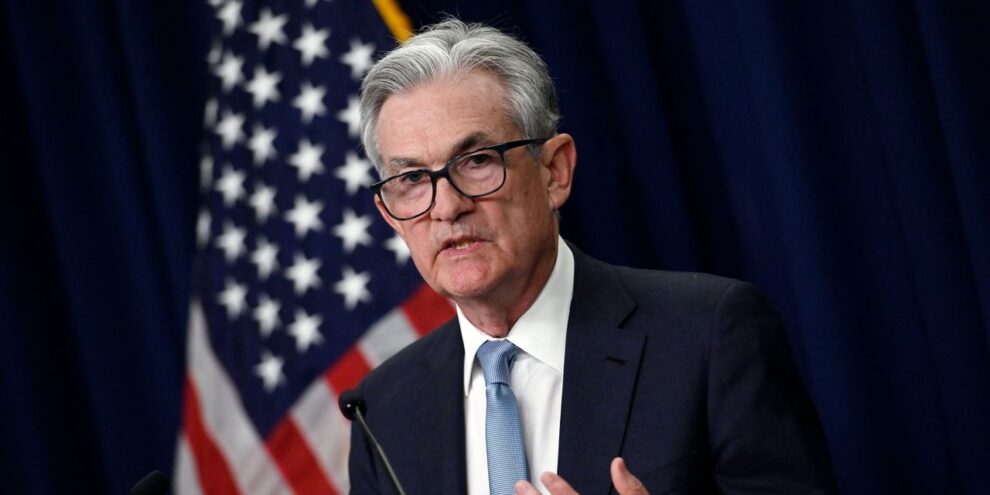
There was a lot to unpack from the Federal Reserve on Wednesday, as central bankers raised their benchmark interest rate by 75 basis points — the largest hike since late 1994 — and signaled that substantially more rate hikes were in the pipeline.
Read: Fed interest-rate hike is biggest in three decades
Here are four takeaways from Fed Chair Jerome Powell’s press conference:
Be at your desk on July 13 for the June CPI data
The Labor Department will release the June consumer price index report on July 13. Based on Powell’s press conference, economists think that data will be a game-changer.
Powell said the Fed might hike rates in July by 50 or 75 basis points. Economists think a strong CPI print will lead the Fed to hike its benchmark rate by 75 basis points; on the other hand, a softer report might lead to a 50-basis-point hike.
“The onus is really on the CPI report next month…it really heightens the event risk for the June CPI data,” said Justin Weidner, an economist at Deutsche Bank Securities.
Luckily, the data will not be not released during the Fed’s blackout period — unlike the May data. So officials will be able to publicly opine on the data and what it means for interest-rate policy.
Powell ‘inched up’ the possibility of a recession but didn’t quite go there. Others are.
Powell walked a tricky tightrope, batting away questions about whether a recession was inevitable, laying out a soft-landing scenario but also saying that circumstances were somewhat out of the Fed’s control.
“We’re not trying to reduce a recession now. Let’s be clear about that,” Powell said.
Former Richmond Fed President Jeffrey Lacker thinks Powell “inched up” closer to the idea that the Fed is willing to run a larger risk of a recession in order to get inflation down.
He noted the Fed dropped a critical sentence from its policy statement: “With appropriate firming in the stance of monetary policy, the FOMC expects inflation to return to its 2 percent objective and the labor market to remain strong.”
That indicates Powell and his colleagues have backed away a little bit from a soft landing, according to Lacker, who said it would be interesting to see if that “sinks” into the market.
Josh Shapiro, chief U.S. economist at MFR Inc., said “it is going to be very difficult to walk a line between taming inflation and at the same time not dumping the economy into a recession. History suggests that the task will be formidable, if not impossible.”
Robert Brusca, chief economist at FAO Economics, said he thinks the economy is headed for recession “more sooner than later.”
Why did the markets cheer Powell?
U.S. stocks DJIA, +1.00% SPX, +1.46% ended a five-session skid Wednesday after Powell’s press conference.
Krishna Guha, vice chair of Evercore ISI, said he thinks Powell “came across much less hawkish” than the Fed’s initial message.
For the market, “flexible Powell” is risk-friendly, Guha said. “The bet seems to be that while the combination of big moves and an outcome-based approach to inflation risks the Fed overshooting badly and causing the next recession, flexible Powell is the ultimate pragmatist and will take a different view as soon as the data permits.”
Ethan Harris, global economist at Bank of America/Merrill Lynch, thinks that if the Fed can’t get “2% inflation and a strong labor market,” it will accept a 3% inflation rate. “Even the anti-inflation giant Paul Volcker only brought inflation down to 4%,” Harris said.
Why a dissent from Kansas City Fed President Esther George?
We don’t know yet why Kansas City Fed President Esther George was a dovish dissenter; she wanted a 50-basis-point rate hike. Previously, Fed officials have issued statements on the Friday following the policy vote to explain their dissents, and George may follow suit.
On the surface, the dissent is puzzling.
“Esther George with a dovish dissent? Am I in the ‘Upside Down?’” asked Omair Sharif, president of Inflation Insights.
Vincent Reinhart, chief economist at Dreyfus and Mellon, speculated that George was not happy with the last-minute news articles that shifted the Fed’s careful messaging from a 50-basis-point hike to a 75-basis-point increase.
“I think if you were just getting off your plane to go to your meeting in Washington D.C. and found your carefully scripted remarks no longer fit because the chair had changed the story, I think your would probably want to show your displeasure by dissenting,” Reinhart said.






